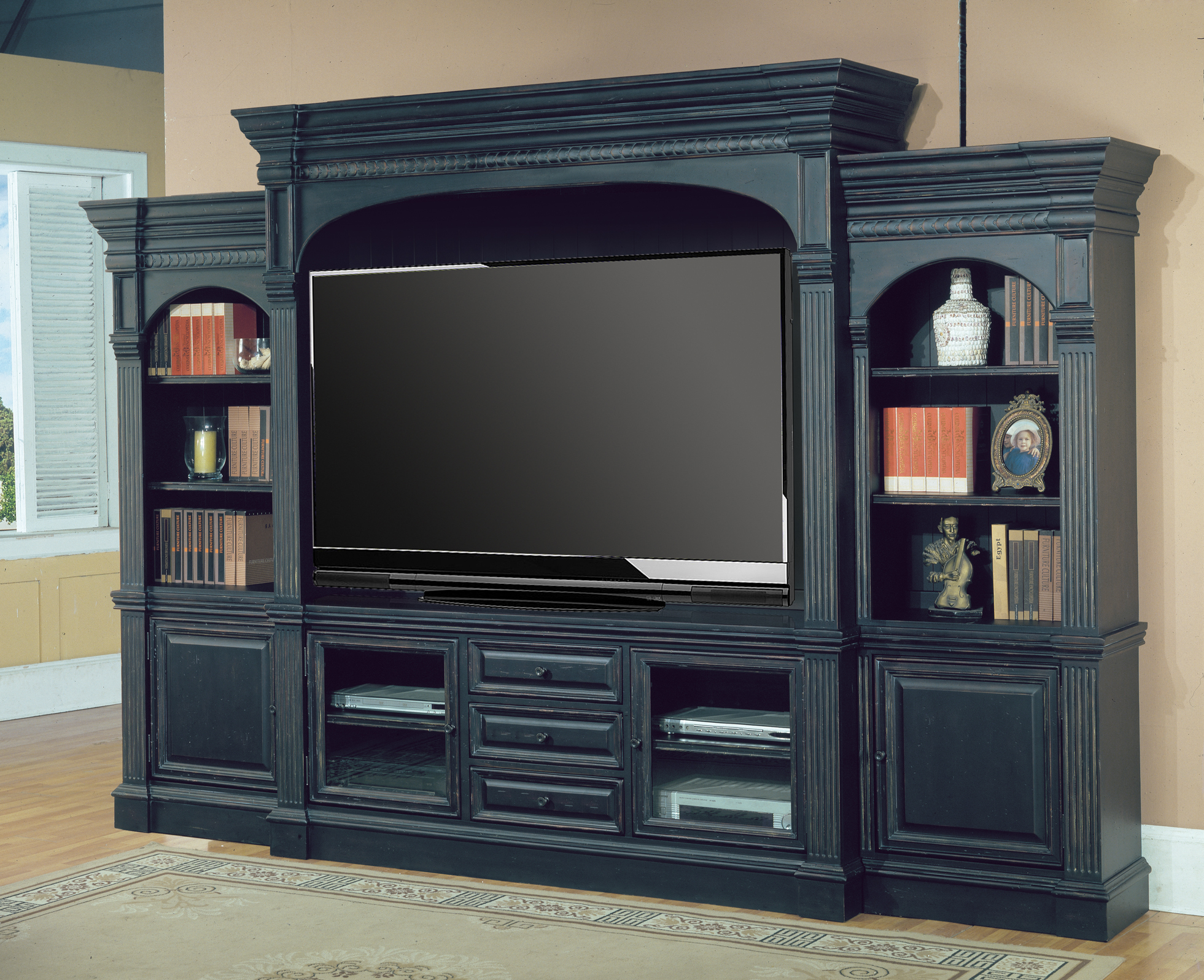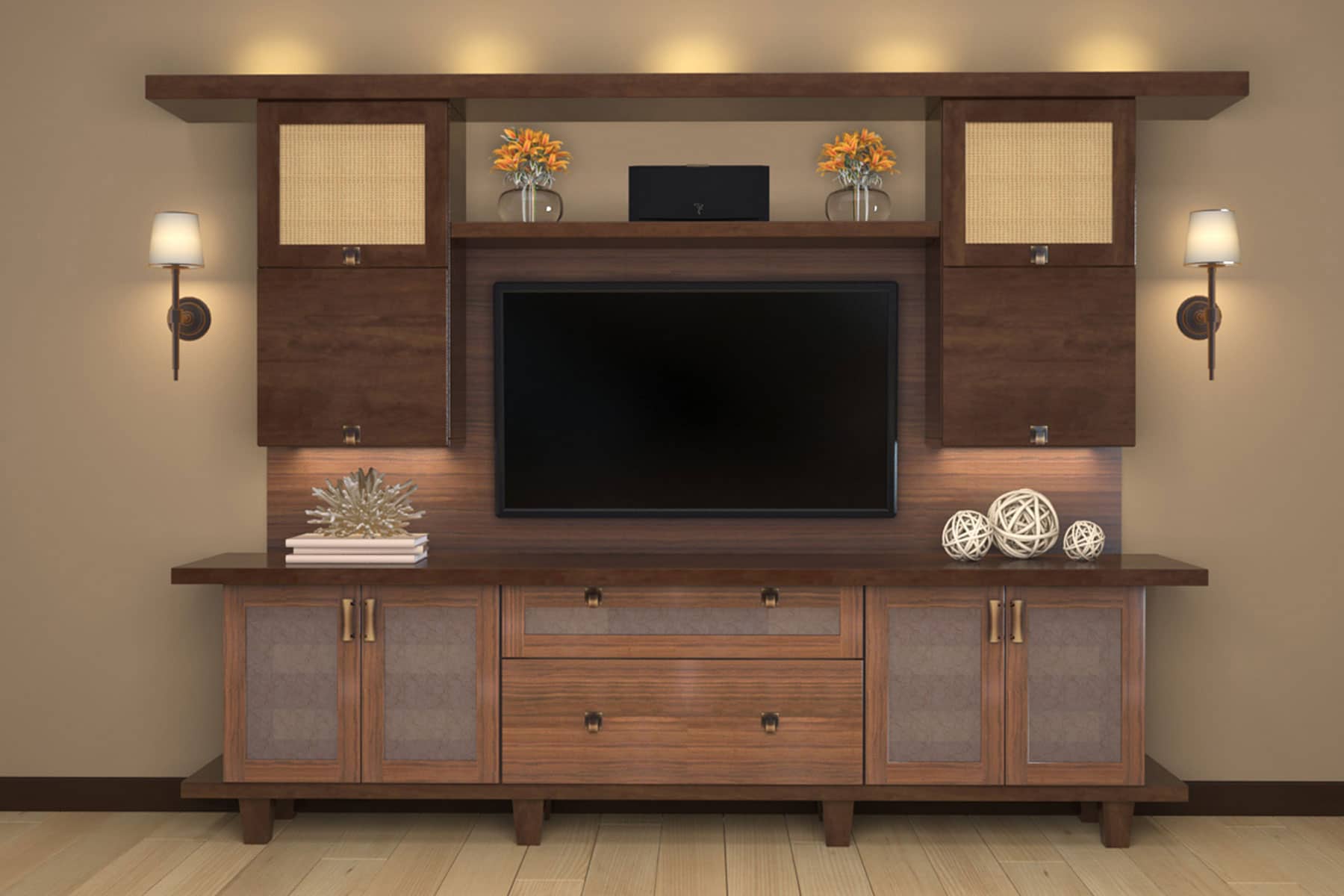Types of TV and Music System Cabinets

A TV and music system cabinet is an essential piece of furniture for any home entertainment setup. It provides a dedicated space to house your TV, sound system, and other electronics, while also adding style and functionality to your living room or home theater. There are various types of cabinets available, each offering unique advantages and disadvantages.
Freestanding TV and Music System Cabinets
Freestanding cabinets are the most common type of TV and music system cabinets. They are independent units that can be placed anywhere in the room.
Freestanding cabinets offer flexibility in placement and allow for easy access to your electronics.
They also come in a wide range of styles, materials, and sizes to complement any décor.
- Advantages:
- Flexibility in placement
- Easy access to electronics
- Wide range of styles and sizes
- Disadvantages:
- Can take up more floor space than wall-mounted or built-in options
- May not be suitable for smaller rooms
Popular examples of freestanding TV and music system cabinets include:
- Entertainment Centers: These cabinets often feature multiple shelves, drawers, and compartments for storing electronics, media, and other items. They can be made from various materials, such as wood, metal, or glass.
- TV Stands: These cabinets are designed specifically to hold a TV and may include additional shelves or drawers for other components. They are often made from wood, metal, or glass.
Features and Functionality: Tv And Music System Cabinet

TV and music system cabinets are designed to house and enhance your entertainment setup. Beyond their aesthetic appeal, these cabinets offer crucial functionalities that improve the user experience and protect your equipment.
Storage Space, Tv and music system cabinet
The primary function of a TV and music system cabinet is to provide ample storage space for your entertainment equipment and accessories.
- Shelves: Open or closed shelves offer flexible storage options for components like receivers, Blu-ray players, and gaming consoles. Adjustable shelves allow you to customize the space to fit various equipment sizes.
- Drawers: Cabinets often include drawers for storing remotes, cables, and other accessories, keeping them organized and out of sight.
- Cable Management: Built-in cable management features, such as cable routing channels and tie-down points, help conceal and organize cables, creating a clean and clutter-free look.
Materials and Construction
The choice of materials and construction methods significantly impacts the cabinet’s durability, aesthetics, and longevity.
- Wood: Solid wood cabinets offer superior durability, a classic look, and excellent sound dampening properties. They are often available in various finishes to complement your décor.
- Metal: Metal cabinets, often made of steel or aluminum, provide robust construction and a modern aesthetic. They are typically lightweight and resistant to scratches and dents.
- Glass: Glass doors and shelves add a touch of elegance and allow you to showcase your equipment. Tempered glass offers increased durability and safety.
Advanced Features
Modern TV and music system cabinets often incorporate advanced features to enhance functionality and aesthetics.
- Integrated Lighting: Built-in LED lighting can highlight your entertainment system and create a dramatic ambiance. Some cabinets offer adjustable lighting options to suit your preferences.
- Soundproofing: Soundproofing materials, such as acoustic foam or insulation, can be integrated into the cabinet to reduce noise and vibrations, improving audio clarity.
- Adjustable Shelves: Adjustable shelves allow you to customize the cabinet’s interior to accommodate different equipment sizes and configurations.
Choosing the Right TV and Music System Cabinet

A well-chosen TV and music system cabinet can enhance your entertainment experience, complement your décor, and organize your electronics. Finding the perfect fit requires considering several factors, from your room’s dimensions to your personal preferences. This section will guide you through the process of selecting a cabinet that meets your needs and enhances your entertainment space.
Determining the Appropriate Cabinet Size and Dimensions
Determining the right size and dimensions for your TV and music system cabinet is crucial for ensuring it fits comfortably in your space and accommodates your equipment. It’s essential to consider the size of your TV, the components of your music system, and the available space in your room.
- Measure the Available Space: Before shopping for a cabinet, carefully measure the width, depth, and height of the area where you plan to place it. Ensure there’s enough clearance around the cabinet for easy access and ventilation.
- Consider TV Size: The cabinet should be wide enough to accommodate your TV without being too large for the room. A good rule of thumb is to choose a cabinet that is slightly wider than your TV.
- Account for Music System Components: Measure the width and depth of your receiver, speakers, and other components. Ensure the cabinet has enough space to house these items comfortably.
- Allow for Ventilation: Proper ventilation is crucial for preventing overheating of electronic equipment. Choose a cabinet with open back panels or ventilation holes to allow air circulation.
Integrating the Cabinet with Existing Furniture and Décor
Integrating your TV and music system cabinet with your existing furniture and décor can create a cohesive and aesthetically pleasing space. Consider the style of your furniture, the color scheme of your room, and the overall ambiance you want to create.
- Match the Style: Choose a cabinet that complements the style of your existing furniture. For example, a modern TV cabinet would look out of place in a traditional setting.
- Consider Color and Finish: Select a cabinet color and finish that harmonizes with your room’s décor. You can choose a cabinet that matches the color of your walls, furniture, or flooring, or you can use a contrasting color to create a focal point.
- Utilize Open and Closed Storage: A combination of open and closed storage can help you display and organize your electronics. Open shelves can be used to showcase your favorite items, while closed cabinets can be used to store less attractive items or to conceal wires.
- Consider Lighting: Lighting can significantly impact the overall look and feel of your entertainment space. Consider incorporating lighting elements into your TV cabinet to highlight your electronics and create a warm and inviting ambiance.
A TV and music system cabinet can be the focal point of your entertainment setup, bringing everything together in a stylish and organized way. If you’re looking for a cabinet that can handle a surround sound system, consider a Sony surround sound TV cabinet.
These cabinets are designed to accommodate the specific needs of a surround sound system, ensuring optimal audio quality and a clean, clutter-free look for your entertainment area.
A TV and music system cabinet can be a focal point in your bedroom, but you want it to fit the overall vibe. If you’re aiming for a classy look, check out classy bedroom ideas on Pinterest for inspiration.
You’ll find tons of ideas for how to integrate your cabinet seamlessly, whether you’re going for a minimalist, modern, or traditional aesthetic. Remember, a well-designed cabinet can add both functionality and style to your space.